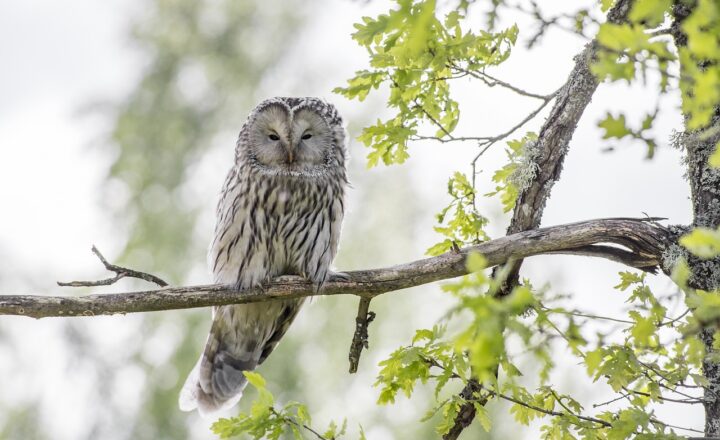Why Lions Are Both Fearsome and Social: Exploring the Unique Social Structure of Lion Prides
November 13, 2024

Lions, often referred to as the “king of the jungle,” encapsulate a duality that fascinates both researchers and wildlife enthusiasts alike. Renowned for their magnificence and power, lions are simultaneously powerful predators and deeply social creatures. Unlike their solitary feline counterparts, lions live in complex social structures known as prides. This article delves into the unique social dynamics of lion prides, exploring the behaviors and interactions that fuel their fearsome reputation while highlighting their social structures that facilitate cooperation and group living.
1. The Anatomy of a Lion Pride
A lion pride is a family unit that typically consists of several related females, their offspring, and a small number of adult males. The social structure can vary, but a typical pride may consist of 10 to 15 members. Here are the main components:
- Female Lions (Lionesses): The backbone of the pride, lionesses are responsible for hunting and raising the cubs. They often give birth around the same time, enhancing cooperative care among mothers, which improves cub survival rates.
- Male Lions: Usually, one to three males govern the pride, protecting it from rival males and ensuring reproductive rights. These males are typically younger and may engage in fights with other males to maintain control, but they also rely heavily on their pridemates for collaboration in hunting and protection.
- Cubs: The offspring of lionesses. Cubs are raised communally, with numerous mothers participating in the upbringing, allowing the pride to defend and nurture the young more effectively.
This social setup enhances survival and reproductive success within the harsh realities of their environments.
2. Hunting in Coordination
One of the prime reasons behind lions’ social structure is their collaborative hunting method. Lionesses, known for their stamina and teamwork, often hunt in groups to take down larger prey that would be difficult for a single lion to tackle alone. Here’s how teamwork plays out in the hunt:
- Strategic Positioning: Lionesses use detailed strategizing to surround their prey, capitalizing on speed and stealth. This coordination allows them to ambush prey effectively, maximizing their chances of a successful kill.
- Roles in the Hunt: Each lioness may take on a specific role, such as driving the prey towards a waiting ambusher or executing a pincer movement to trap the animal. This specialization reduces individual risk and increases the overall success rate of hunts.
While adult males may not participate heavily in daily hunts, they do contribute during significant kills where their size and strength are essential. After a successful hunt, they’ll often assert dominance over the spoils, reinforcing their status within the pride.
3. Social Bonds and Communication
Lions exhibit various social behaviors that facilitate bonding and group cohesion:
- Grooming: Social grooming is common among lionesses. It strengthens social bonds, reduces tension, and promotes peace within the pride. Mutual grooming also helps in removing parasites and dirt, thereby improving health among pride members.
- Vocalizations: Lions communicate through a variety of vocal sounds, including roars, grunts, and moans. Their iconic roar can be heard up to 5 miles away and serves as a way to assert territory and maintain social cohesion within groups. Roaring also serves as a warning to rivals and boosts the pride’s presence in their territory.
- Playful Interaction: Young cubs and adult lionesses engage in playful activities, which not only improve social interactions but also aid in teaching hunting skills and strengthening relationships within the pride.
Social bonds are integral to both survival and reproduction in lion prides, providing a supportive structure that enhances the pride member’s quality of life.
4. Maintaining Territory and Hierarchy
Territory plays a crucial role in the survival of a pride’s dynamics. A typical pride claims a territory between 20 to 400 square miles, depending on prey availability and landscape. Male lions execute several strategies to maintain territorial integrity:
- Scent Marking: Male lions leave scent markings on trees and shrubs to delineate their territory, warning rival males to keep their distance. This territorial behavior helps limit conflicts and maintains stability within their domain.
- Challenging Rivals: Males must constantly be vigilant against rival prides. Fights can be brutal, but taking over another pride can increase reproductive opportunities, as the new males often kill the existing cubs to bring the females into estrus sooner.
- Hierarchy Within the Pride: Within a pride, there is a dominance hierarchy mainly among males. This hierarchy helps to alleviate conflict by establishing clear social roles; the dominant male has priority access to food and mating opportunities, ensuring that the strongest genes are passed on to the next generation.
This territorialism is crucial not just for pride stability but also plays a significant role in conservation of resources and space for cub survival.
5. The Balance of Fearsome and Social Nature
While lions are fearsome predators, their social behavior distinguishes them from other big cats. Their dual nature is a remarkable adaptation that allows them to survive in diverse environments and face various challenges. Here are a few reflections on this balance:
- Defense Against Predators: While adult lions are apex predators, their cubs are vulnerable. Social living offers collective vigilance against dangers like hyenas and other potential threats. Multiple eyes searching for danger can mean the difference between life and death for a cub.
- Coordination Versus Solitude: Unlike solitary predators, lions thrive on cooperation. The social structure aids in hunting and rearing cubs, with the threat of rival prides necessitating combined efforts. Their ferocity is enhanced by their collaborative mechanisms rather than individual prowess alone.
- Empathy and Cooperation: Social interactions within prides show signs of empathy; lionesses with shared cubs demonstrate protective behaviors towards all youngsters, fostering a sense of collaboration and community. This cooperative behavior enriches the pride’s overall support system, allowing for successful raises and survival of the young.
The interplay between fearsome capability and social finesse underscores lions’ evolution as both formidable hunters and caring social animals.
Conclusion
Lions remain not just fearsome predators but also epitomes of social structure, demonstrating how cooperation enhances their survival. The unique dynamics of lion prides illustrate a vivid picture of balance in the natural world—one that is interdependent, supportive, and adaptive.
As we continue to study these majestic creatures, we glean insights into wild living, the importance of social bonds, and the intricate roles that lead to evolutionary success. Lions embody a fascinating paradox: they are both powerful hunters and social beings, shaping the wilderness they roam. Understanding the social structure of lion prides not only enriches our knowledge but also aids conservation efforts, ensuring these magnificent animals remain symbols of strength and community for generations to come.







